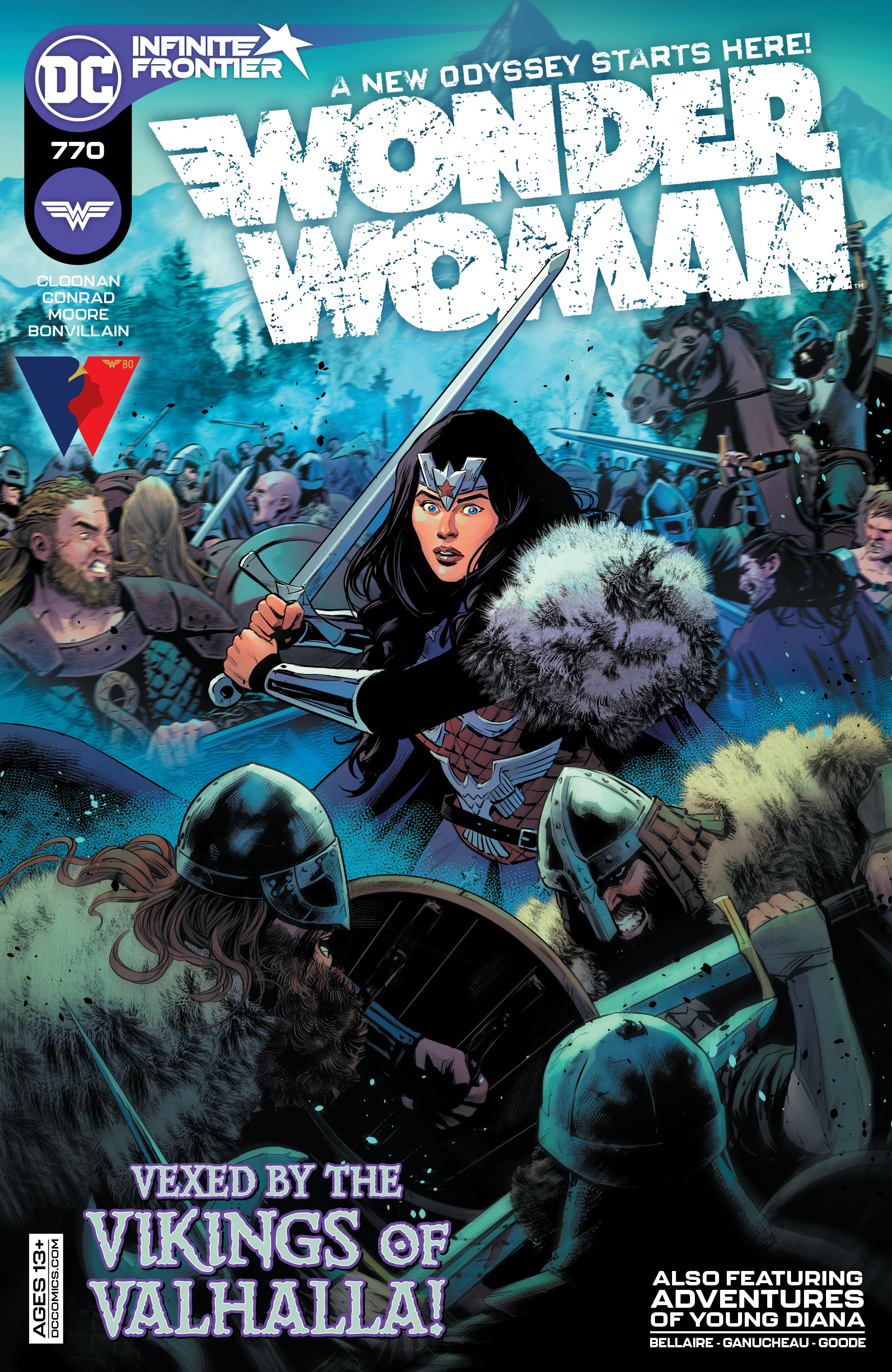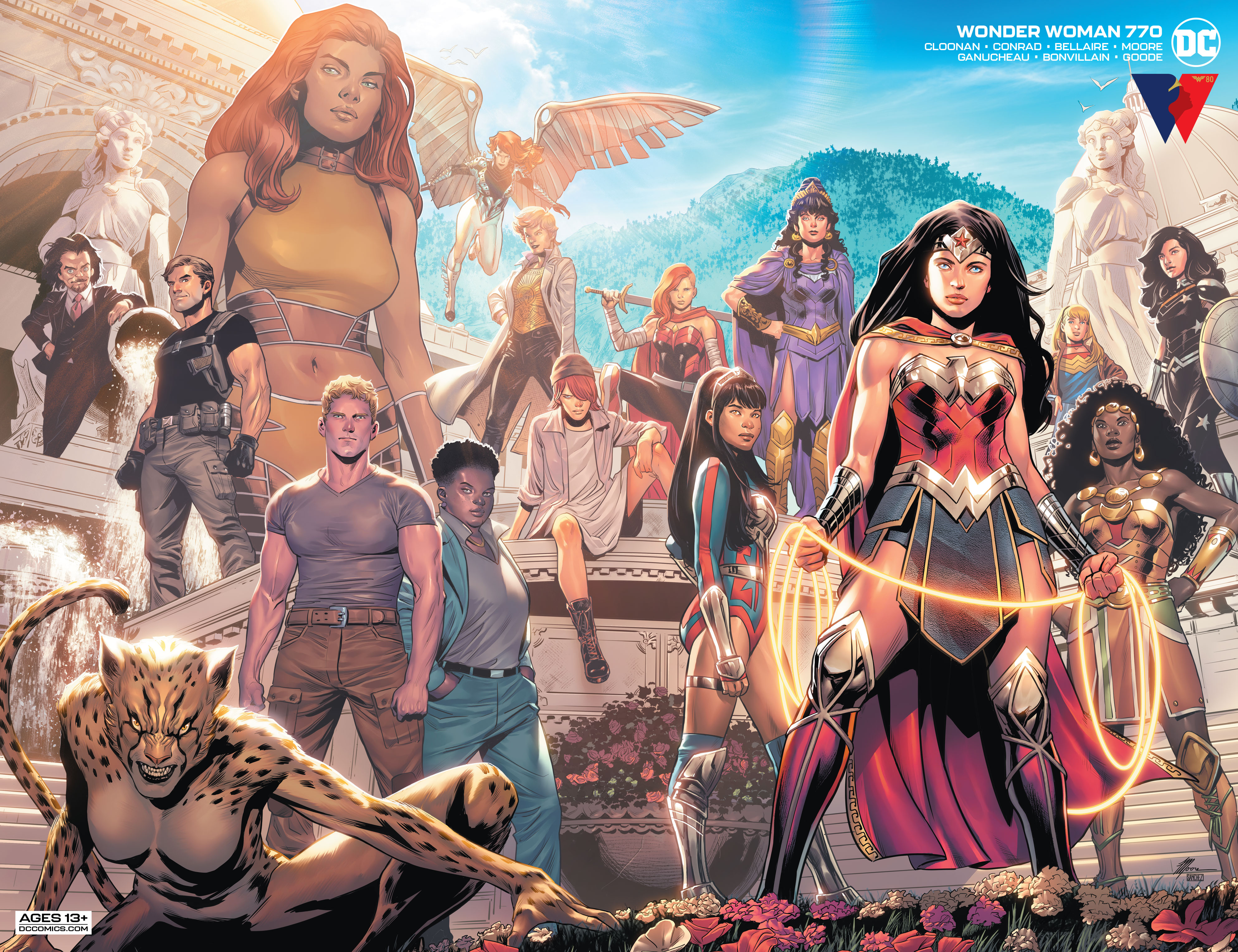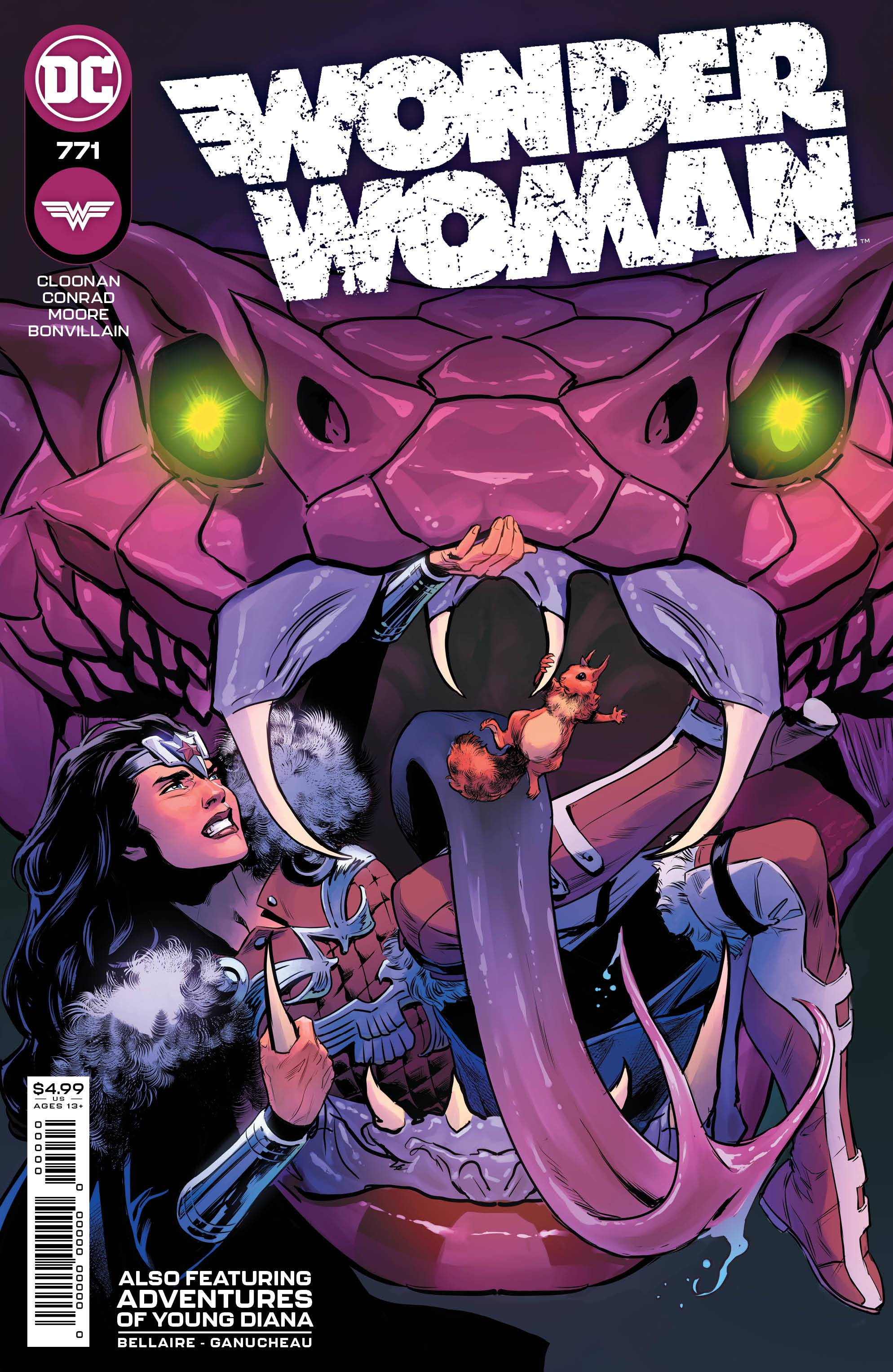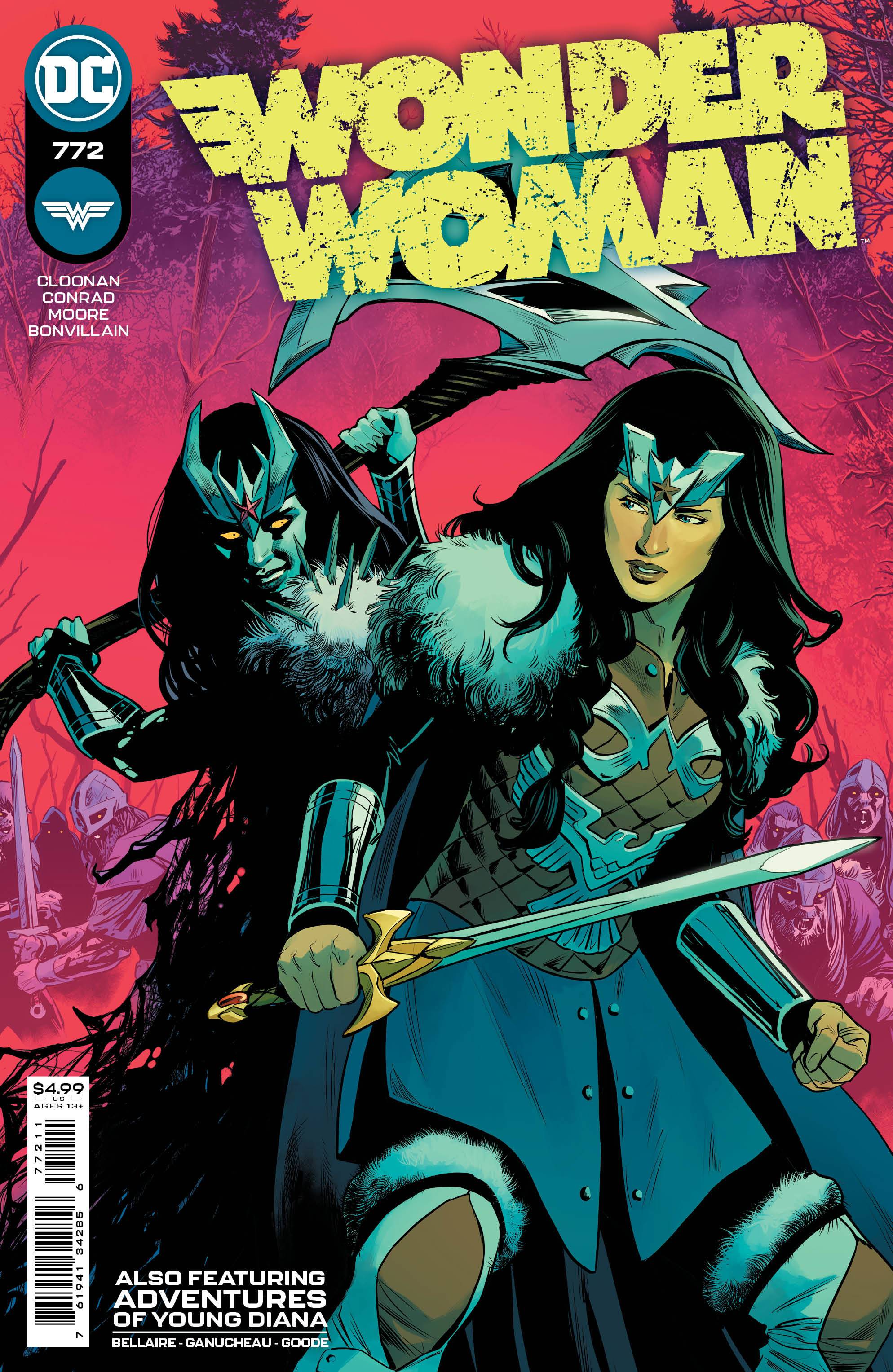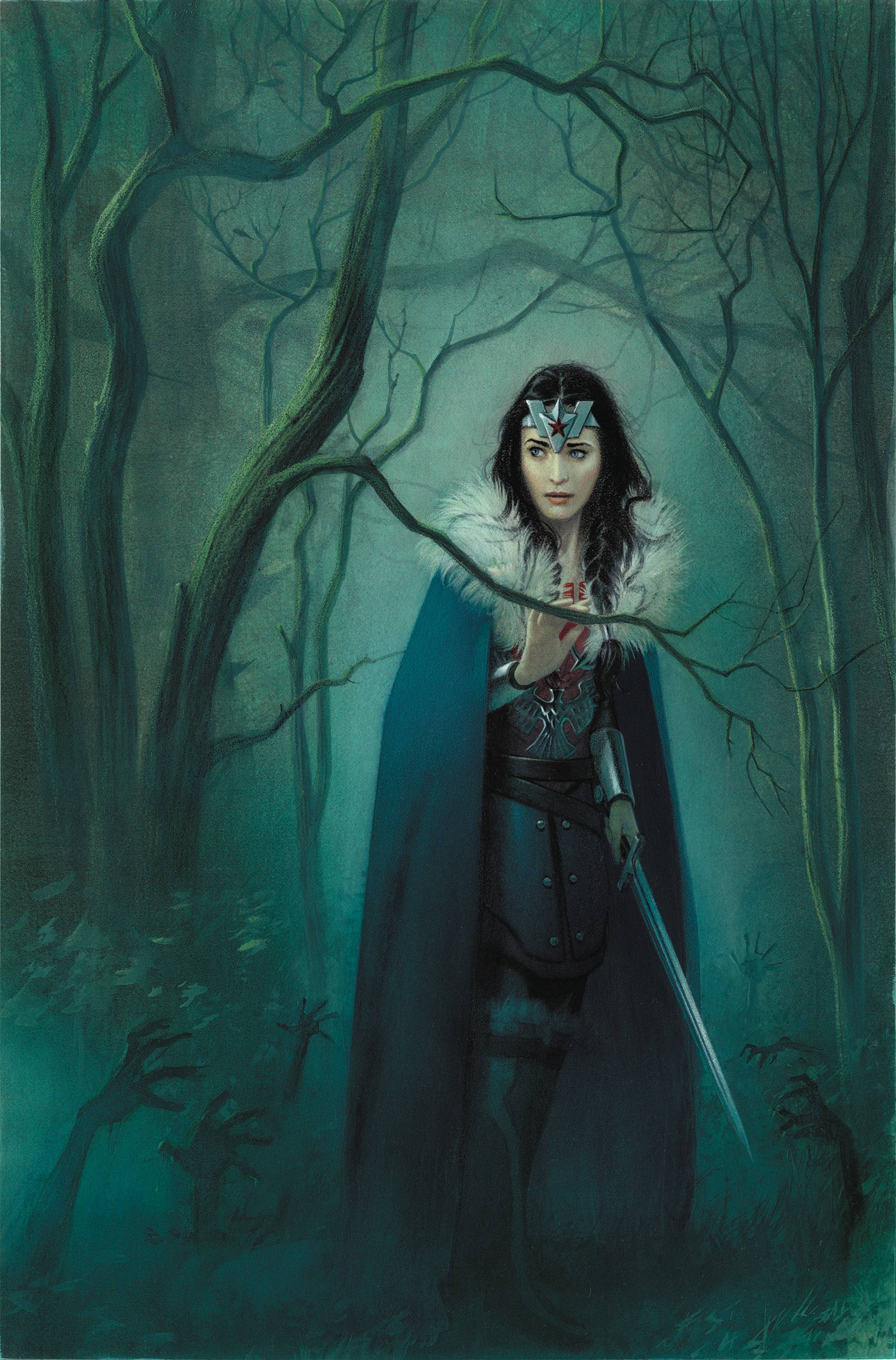Wonder Woman #770 begins a D&D style campaign with side quests, helpful characters, and a squirrel
A new Wonder Woman era begins with her skipping through mythologies
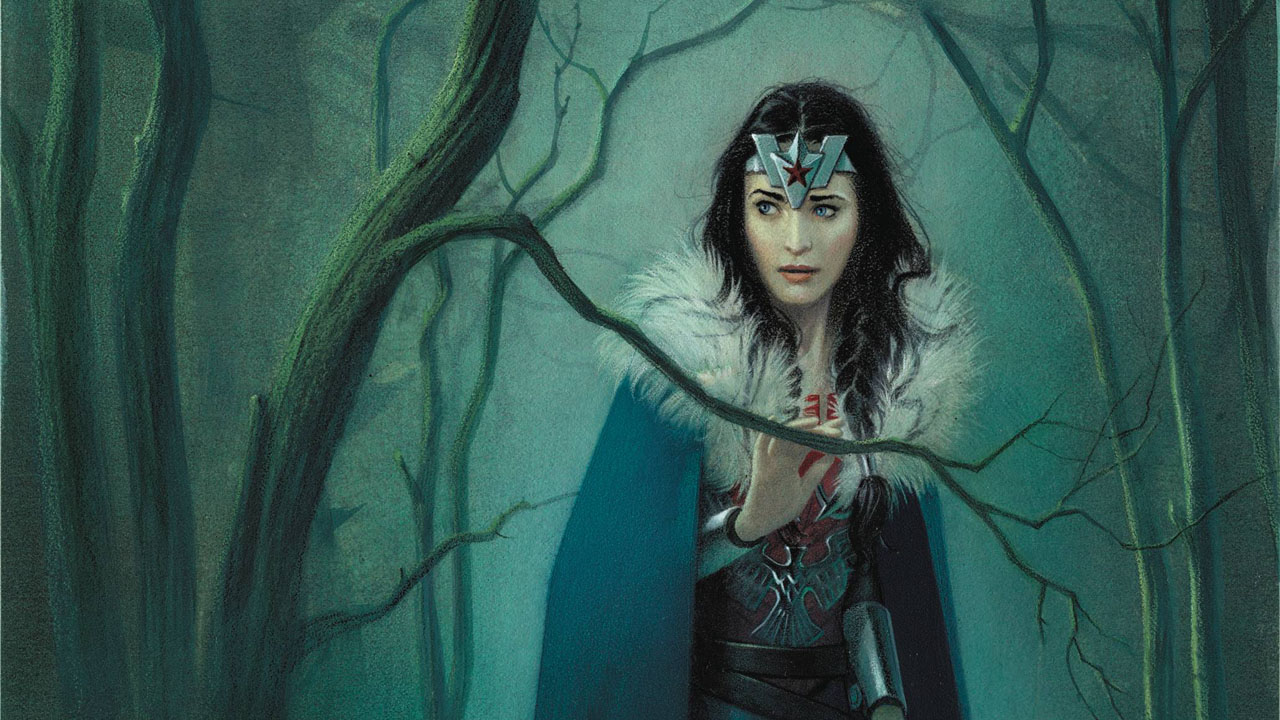
There's a Princess of Themyscira in the Halls of Asgard. Yes, you read that correctly. In this week's Wonder Woman #770, Diana finds herself swapping Greek mythology for Norse, drinking and dueling with the gods and goddesses of the Vikings. It's a pretty strange switch-up, especially strange when you consider that Diana is there… because she's dead.
Crafting this inter-mythological tale is the team of Becky Cloonan and Michael W. Conrad on script, Travis Moore on art, Tamra Bonvillain on colors, and Pat Brosseau on letters. If you're a fan of Diana's, you'll probably recognize this writing team that brought her into DC's Future State with Immortal Wonder Woman.
Ahead of Wonder Woman #770's release, Newsarama got the chance to chat with writers Cloonan and Conrad about this exciting and mystifying chapter in Wonder Woman's story. Check out what they had to say.
Newsarama: You two are writing Norse gods for DC Comics, which is a different publisher than most fans would expect from a story of Norse mythology. Can you talk about writing Norse gods for DC?
Becky Cloonan: When you're doing something like Wonder Woman, so much of her legacy has been influenced by Greek mythology. So, it makes sense that as you move through the Sphere of the Gods, you start out with something else, with Norse Mythology. When you bring in myths and gods, the trick is to balance the mythology aspect with the superhero aspect. It's about taking these characters that exist in myth and turning them into something that exists on a comic page, one within the DC Universe.
And actually, we're not the first people to use Norse mythology in the DC Universe. That was [Jack] Kirby, so we're following in legendary footsteps here. It's a lot of fun to reimagine these characters from various places, to take from the myths what we can, and then wrap it all up and throw it in the box.
Nrama: Could you expand on that? On walking the line between myths and superhero comics?
Get the best comic news, insights, opinions, analysis and more!
Cloonan: A lot of it is character stuff. Norse mythology is incredibly convoluted and confusing, so I think it's trying to untangle that and make it into something that works. We want to be recognizable as Norse mythology, but we also want to bring our own flavor to it.
Even with the costumes, you don't want it to look too "superhero-y." On one hand, we wanted [the costumes] to feel historical and feel like you're in Asgard and in Valhalla and the mead halls. But at the same time, you don't want it to be a historical epic you wanted to be a superhero book. There are so many different lines you have to walk with that.
Michael W. Conrad: I get excited by the idea of this iteration leaning heavily into the historical inspired costuming. Of course, we're updating them and making them look cool in a comic book, which is really important to us. But we've been doing a good deal of research in terms of what people actually wore, and how they lived. Once we had that stuff, we'd forward it over to Travisso that he could be inspired by that while he was working up designs for these characters.
Most of the Asgardian gods have existed in the DCU, and they've looked very much like superheroes. We wanted to do our own thing and get away from that, without having it be a bunch of bland people wearing potato sacks. We wanted to have it look cool too! So we took some liberties with historical information and with mythological information. We try to do our own thing with it.
Part of the fun of this is knowing that people's point of reference for a lot of these characters are going to be from that other major publisher, and having fun with thinking about these characters and the relationship we have with them from reading the myths. We're interpreting them by going, 'Hey what would that look like if we were a little bit more inspired by what exists in the record of these largely verbal histories of these characters?' So that was a lot of fun for us.
Nrama: You just mentioned artist Travis Moore, who's responsible for bringing the unique look of your Asgardians to life. How have you tailored your writing to fit Travis's art? What about his art spoke to you, and what should fans look out for in it?
Conrad: Getting Travis on Wonder Woman was a real win for us, when we were told that he had agreed to come on we were ecstatic. With Travis in place, it took a lot of pressure off of us, knowing that he would be able to realize all the wild ideas we were exploring and elevate it beyond our expectations. With Travis, we try to make sure that the script gives enough direction without creating a situation where he isn't part of the world-building.
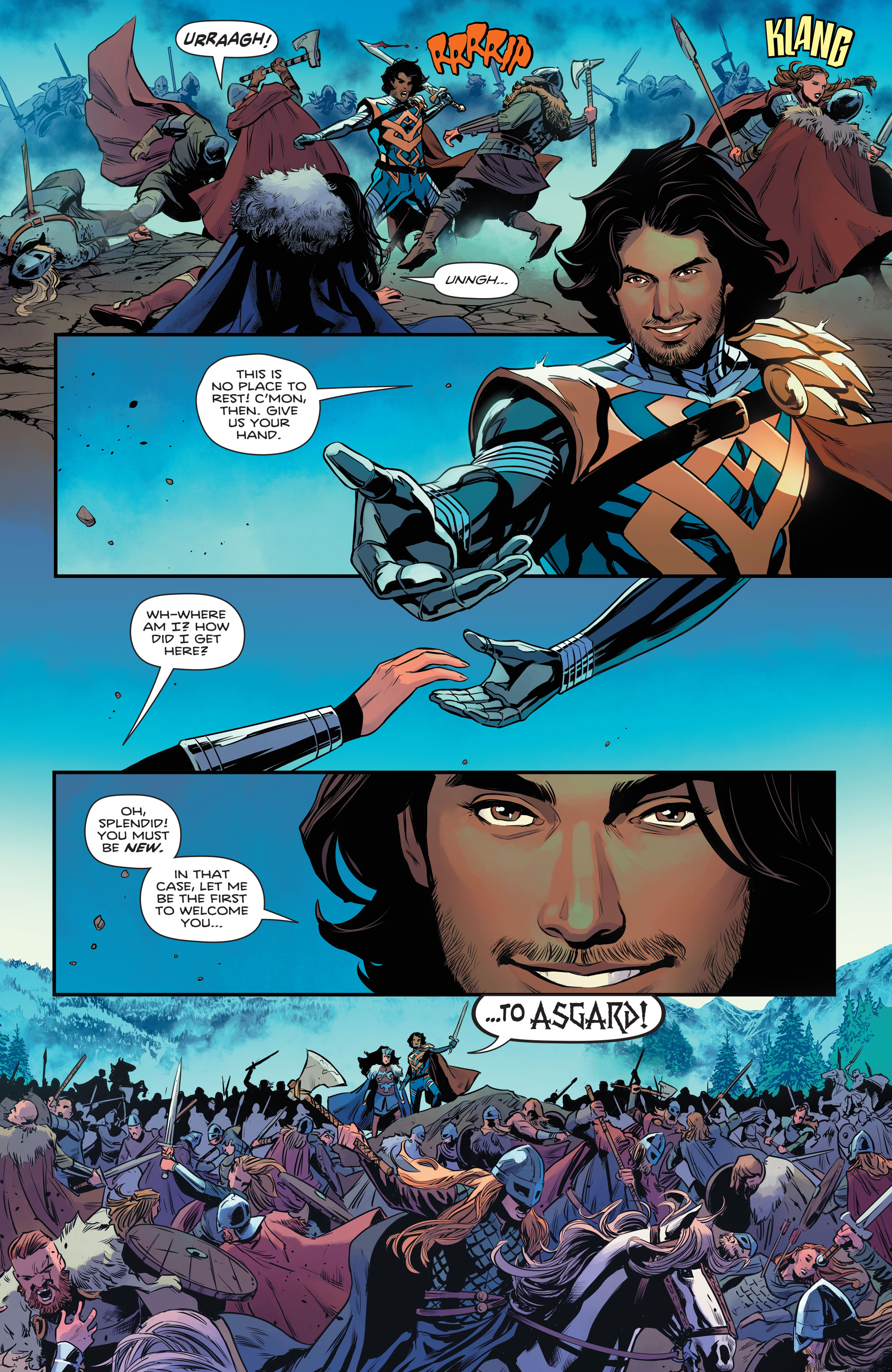
Wonder Woman #770 preview
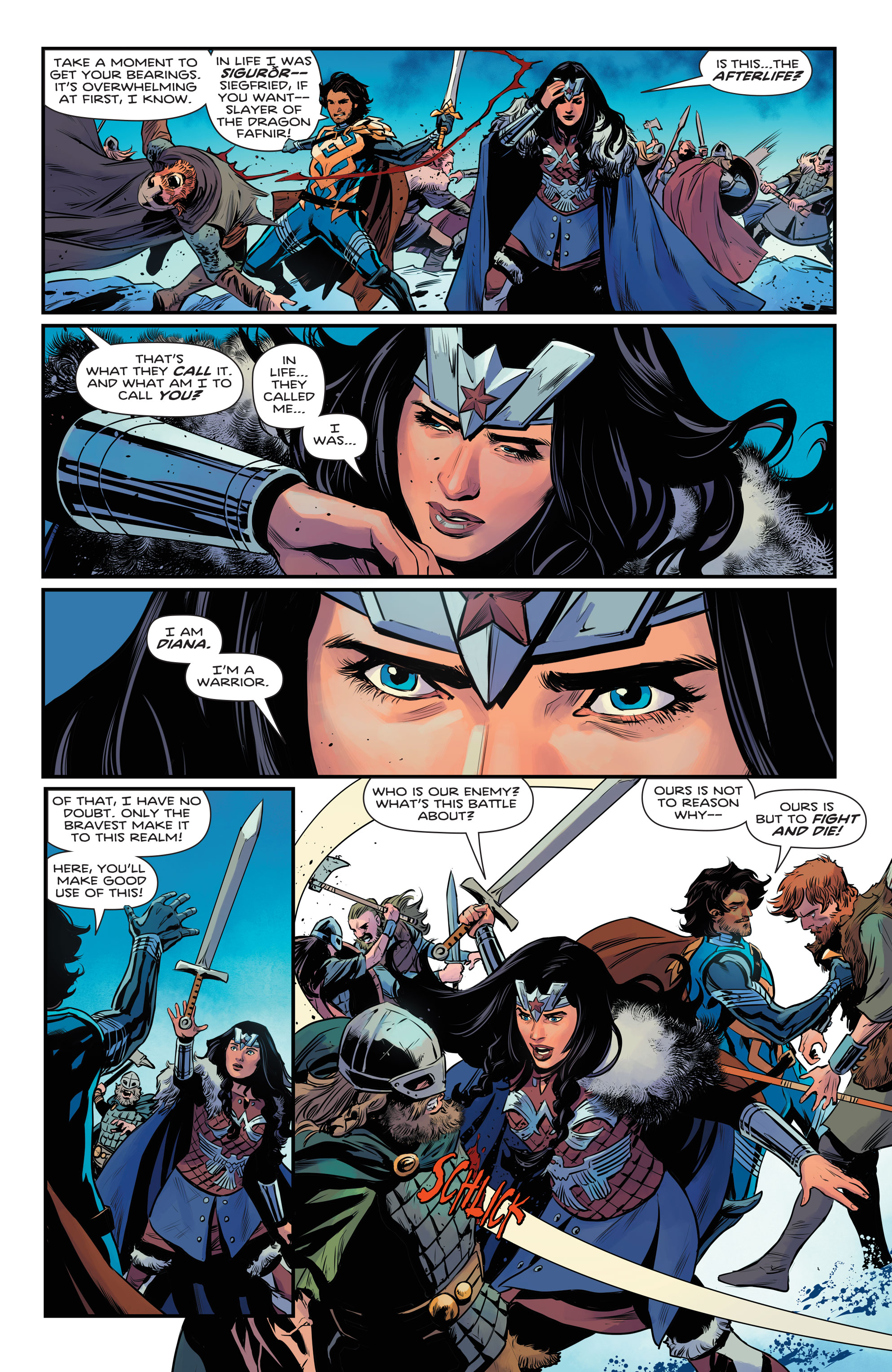
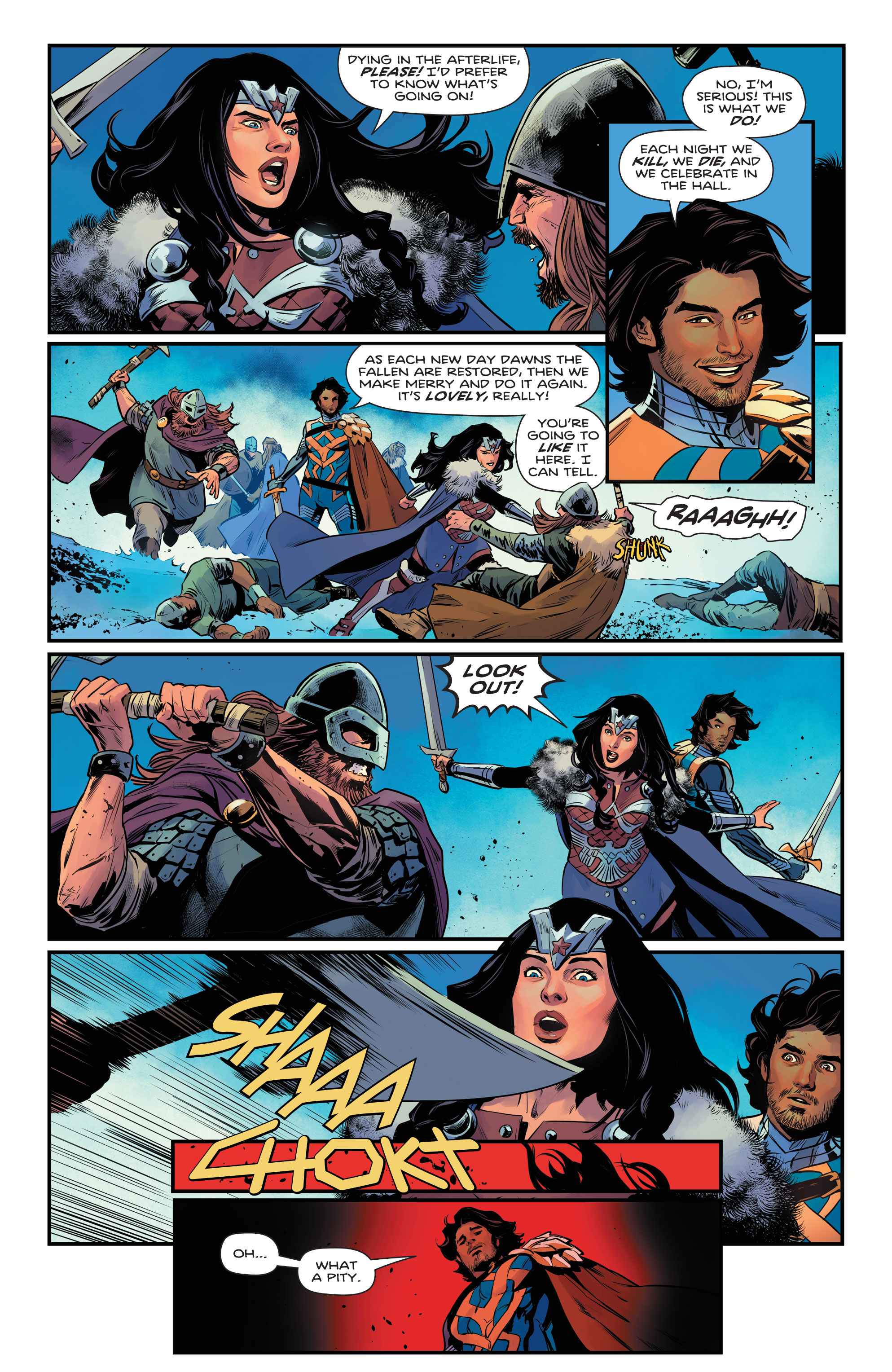
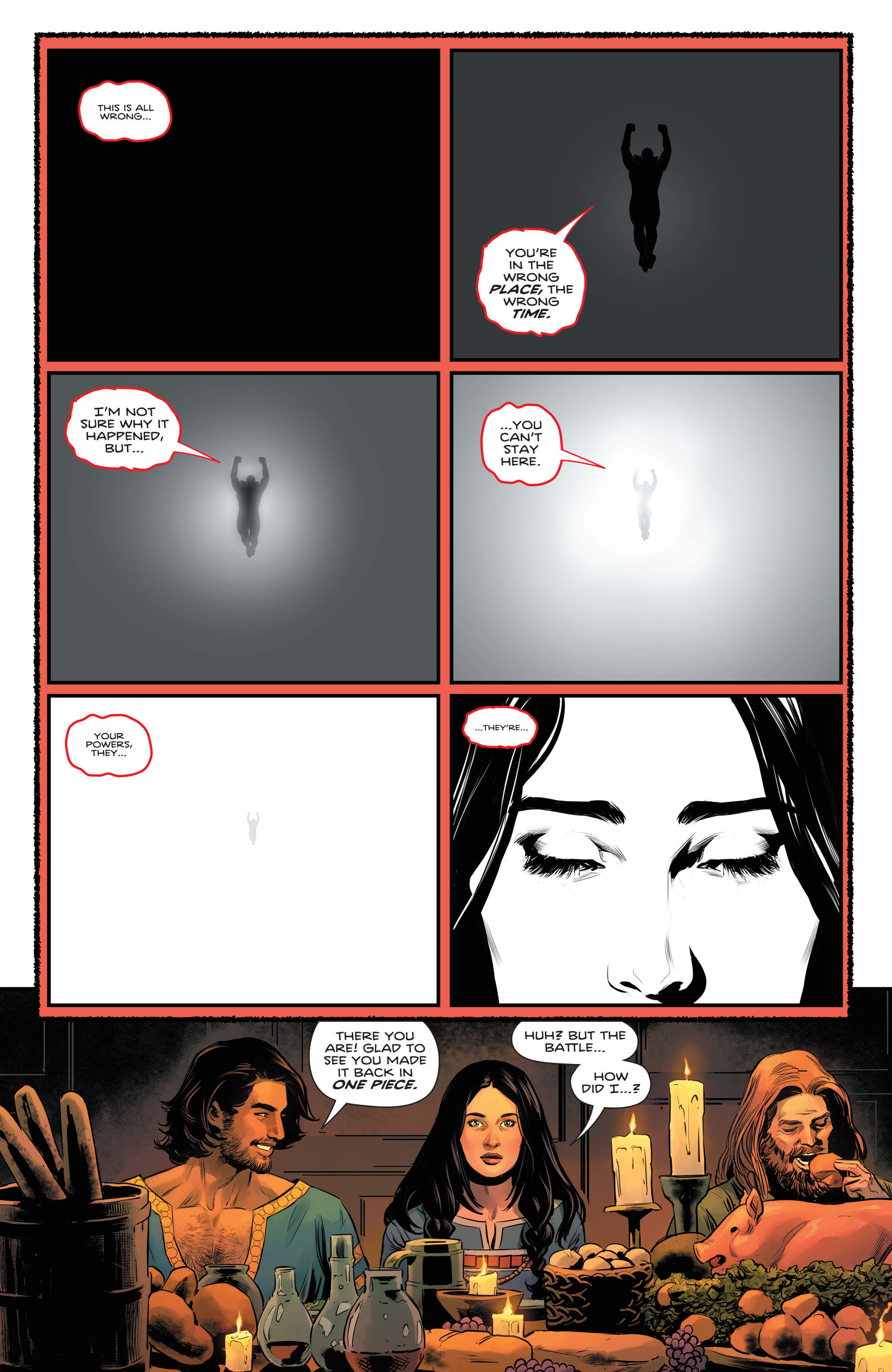
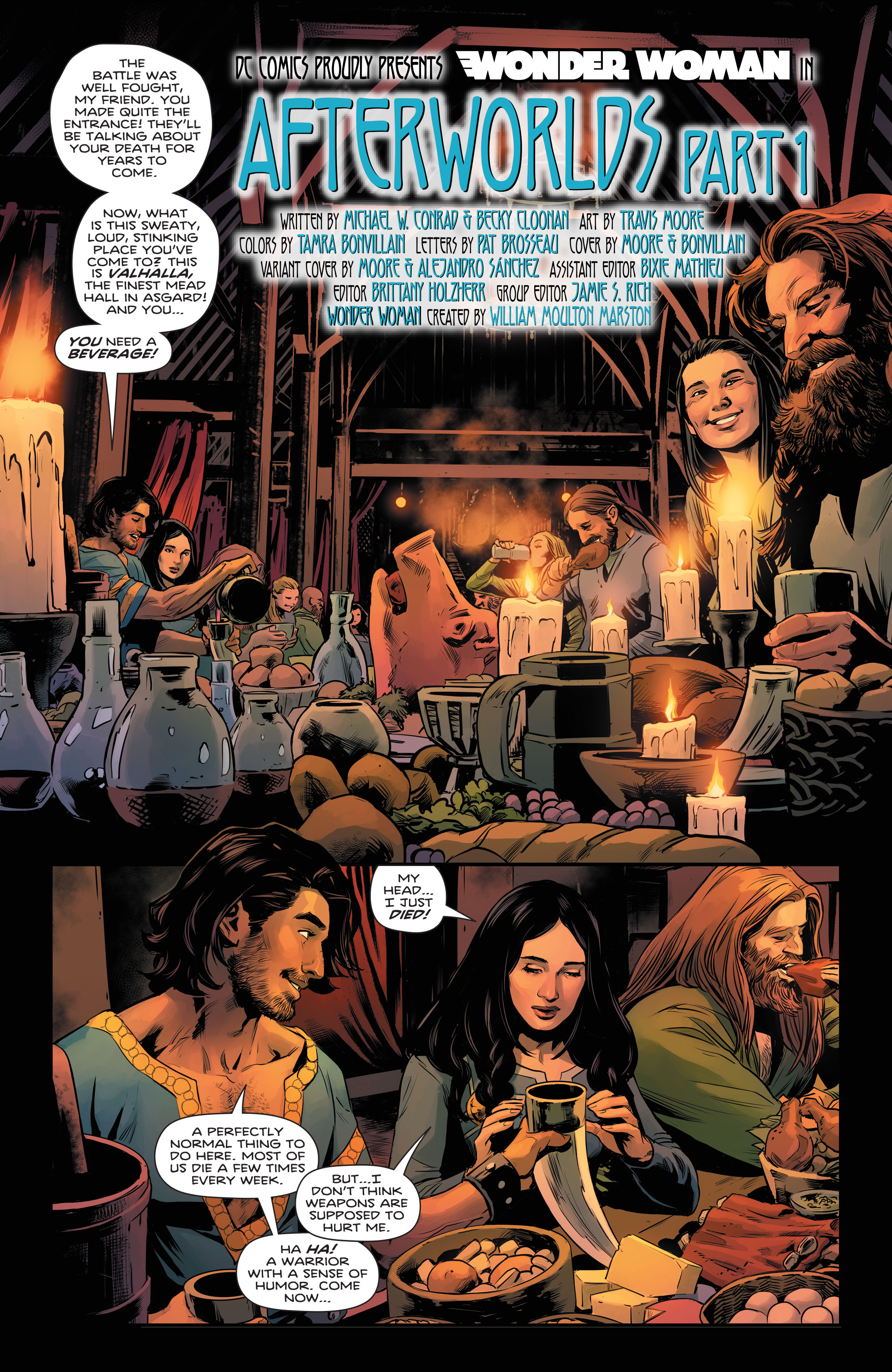
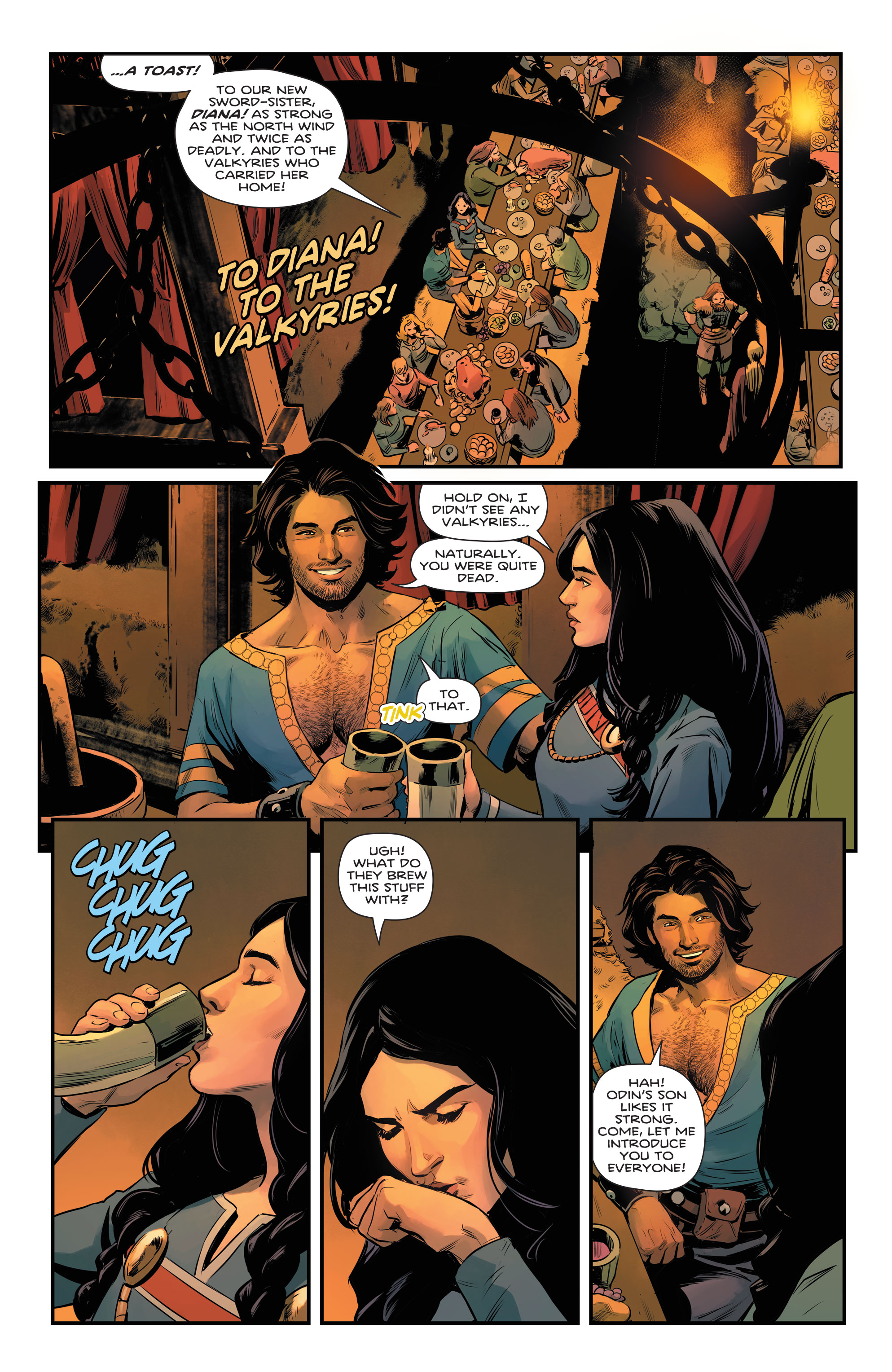
It's always thrilling to see how he has interpreted our words. Travis is just fantastic, and knows how to create a wide range of expression and personality into every panel and design.
Nrama: Something that strikes me about this art is that it comes across as a little bit haunting. There's something very spooky about this Asgard. Was that intentional?
Cloonan: I love when things are spooky, so probably. I feel like my stories always lean toward spooky, even if I'm not trying to make them that way. They just end up like that.
Conrad: Yeah, both of our sensibilities lean in the direction of foreboding. We'll see as Wonder Woman continues on her journey through Asgard that there's a lot of reason for there to be a foreboding sense. We're trying to seed that in a little bit early on; hopefully it'll pay off as we start to reveal what the big story is all about.
Nrama: And how do you seed that in? As writers of a mystery story, what do you do to place clues or give hints? Where do you find yourself doing at the most?
Conrad: You know, it's terrible, because when you know the answer to the question, you worry that you're putting too much out there.
My response as a writer is to pull back on the reins and not give a ton of information, to allow the reader to wonder. I recently watched this David Lynch MasterClass (I'm a huge fan of his), and he said that in each story, it's important to leave what he calls "room to dream." I was really inspired by that.
I know in Becky's self-published work, there is oftentimes a lot of room for the readership to make their own value judgments. We're doing that with the mystery here; giving opportunity for people to chase down what they think things mean. We are hoping we're not being too vague with it.
Cloonan: Yeah, a lot of it happens in the outline stage. In a mystery, you have to know how it ends and then you have to give yourself a little stepping stone to get there. Occasionally, you take a stone out, because your readers are smart and they can figure it out.
Like Michael said, you don't want to give too much away. The true failing of the mystery is if it's not mysterious enough. So hopefully we're giving readers a lot to chew on it.
Conrad: I don't think we set out to write a mystery. I think it's become a bit of a mystery.
Cloonan: I love mysteries.
Nrama: Part of the reason it feels like a mystery was the super atmospheric colors of Tamra Bonvillain. Can you talk about deciding on the color palette with Tamra? What did she bring to the table and was it different from the finished product?
Conrad: Becky and I are both huge fans of Tamra, having worked with her on Doom Patrol we knew she was the right woman for the job. During the creative process, you really see how much she adds to the look of the book, and her colors have been a huge part of establishing a variety of tones.
She has the interesting job of bringing color and depth to a lot of strange places with odd requirements; she kills it every time.
Nrama: Going back a bit, you said you didn't set out to write a mystery. What did you set out to write?
Conrad: We wanted it to feel almost like a D&D campaign, with mini-missions built into it.
Cloonan: Yeah, with side quests and characters that help you out a little bit.
Nrama: Speaking of those characters, can I ask about the squirrel?
Cloonan: Yes. Ratatosk is one of my favorite characters in Norse mythology. He's great. He's this little squirrel with this little tusk or tooth or horn or whatever. And he just runs up and down the world tree, delivering messages and being a little scamp. When we were thinking about doing Norse mythology, before even Thor was mentioned, I was like, 'We've got to put the squirrel in. Wonder Woman needs an animal companion.'
When someone dies in the afterlife they have someone showing them around. It's a trope. So Ratatosk kind of fills that role in a way that he also needs something from Diana.
Conrad: I love Ratatosk. I love what he brings out of Diana. He has become something that I love very much. What a funny thing to discover, that this seemingly comedic will become very important. Ratatosk is very important; a critical character. We're glad that we got away with him.
I hate when writers say, 'We wanted the character to have fun.' I really don't care if the character is having fun, as long as I as the reader am having fun. But you know, after telling Immortal Wonder Woman, which is a morose gut-punch…
Cloonan: And after Death Metal too…
Conrad: Diana has been put through the wringer. So we came up with this idea that's kind of an opportunity to let her drop some of the baggage. And for her to have fun and hopefully it's fun for the readers to see our version of someone having fun.
Cloonan: Spooky fun.
Nrama: There's a great quote in this issue along those lines. At one point, Diana's in Asgard and she's relaxed. She's having a good time. And this bit of narration goes "she let go of what was forgotten, unburdened by the ghost of heroism." Can you expand on that? What was forgotten? What is the ghost of heroism?
Cloonan: It's figurative and it's literal.
In this story, Diana is not on Earth anymore. She's ascended to the Sphere of the Gods. Her life on Earth is a little hazy; she knows she was a hero, but she doesn't have the memories of what that meant. A character like her has such an intense legacy and a lot of pressure on her to make good decisions and right decisions. But she's unburdened by that. She knows who she is, but at the same time, she doesn't have the pressure of all these choices that she's had to make in the past.
Conrad: There's almost no morality to contend with in this afterlife. Things have been determined and Diana's found herself in this place where violence doesn't have consequence.
Wonder Woman has been portrayed as extremely violent at some points in the DCU. And she's also been portrayed as a pacifist. As a reader, I'm interested in both of those elements and putting her into a position where neither of those things matter at all.
Everyone [in Asgard] is dead. Every time someone becomes harmed or killed they'll be back. It's part of the gig. I can only imagine what that'd be like for someone who has spent a huge amount of time considering moral quandaries. If I were Wonder Woman, I'd be very very pleased. I'd be quite relaxed in a circumstance where I could punch somebody and not worry about harming someone.
Nrama: You mentioned her legacy and the way she has been portrayed throughout DC history. Does her legacy weigh on you two as you're writing her? Do you feel the need to break free from that legacy or lean into it?
Cloonan: At first there definitely was an intimidating factor, to take on a character that has just so much history. She's a character that has so much. She's the Goddess of War and peace and violence and pacifism, so there are so many different elements to her you have to strike the right balance. But every previous team that has come before has brought something new. After jumping in, you feel comfortable bringing something new to the table.
Conrad: I am filled with terror. This is a character that I love, and I don't want to ruin anyone's experience or relationship with Diana. I want to honor what came before because that's why I'm here. I'm here because I love Wonder Woman.
But also, wouldn't it be so sad and so bland to do something that has already worked? We owe it to ourselves and we owe it to our readership to at least give a go at adding a new element to her. The way that we intend to do it is by taking the elements of her that really spoke to us and pushing those to the forefront. How you do that isn't by over-emulating something that came before it. by taking that feeling so
I've really focused and I've done a lot of rereading of some of the older Wonder Woman and some of the newer stuff as well. I'm taking little notes of emotional beats and things that really work for me and the way I see the character. I know Becky has done the same thing. We are really united about what we love about here. It's just a matter of finding new ways to show that, to express things that make her singular as a character in the comics sphere.
Cloonan: Superhero comics is a big sandbox. And everyone is playing right now. When you get handed this character, you are building on everything that came before.
Conrad: We're presented with a reality for Diana that is very inclusive of a lot of stuff. That maybe was either ignored or kind of pushed to the side before. It's really wide open right now and we want to explore some of these ideas.
We had a critique for the entire 'Future State' line. I heard a few people be like, "what relevance does this have to the greater continuity?" And to that I say: everything has got importance and value. It's all contributed to the tapestry of how we view these characters.
So while this one isn't Diana fighting side-by-side but with the rest of the JLA, it's not a huge crossover across the entire line, I would suggest to readers that they read this particular piece of Diana's story as a character study and a rediscovery of the character. People ask me if it's a good place to jump on, and my answer is "absolutely." We're going to hold your hand a little bit, but for long-time readers, we are going to sneak in a ton of stuff that is going to be for you.
Nrama: Where will that come in, the stuff for the long-time readers? Where should we be watching for that?
Conrad: We get introduced to specific things going on in the background of #770 that are going to pay off and kind of bloom out into other things. As Diana continues her journey, I would suggest readers pay attention to the characters in the background, the stuff that's going on on the sidelines. There's going to be stuff there for you, but we won't be super explicit about it.
As her journey continues, it'll become more and more apparent as to what's going on.
Nrama: Without spoiling too much, is one of those things the disappearance of the Valkyrie?
Conrad: The disappearance of the Valkyrie is connected to the big story I don't know if I want to show our hand just yet.
Cloonan: There are the Asgard mysteries, which include the Valkyries and things like that, but then that blooms out into the larger stuff. We'll be going beyond that in the series. It's not just Norse mythology that we're playing around with.
Conrad: That's a big dish right there. That's a serious cup of tea being spilled.
Nrama: Can I include that?
Cloonan: I think so. I don't think there's anything being spoiled there. Diana's got places to go, people to see. It's not all in Asgard.
Nrama: Can I ask what other mythological realms she's going to be visiting?
Cloonan: [Laughs] Wouldn't you like to know?
Conrad: She's got to go to Olympus at some point, right? That's where she's supposed to be.
Cloonan: She's supposed to be there. But the question is: How did she end up in Asgard in the first place?
Conrad: It's just such a strange thing. If I imagine myself dying and waking up in some other belief system's afterlife, or if I didn't even believe in anything. Waking up in any kind of afterlife; it would blow my mind. I'd be excited to explore and try to become part of that.
Cloonan: To assimilate yourself into the culture?
Conrad: That's the fun of Wonder Woman in Asgard. You might expect her to be sad that she's dead. But I think she's kind of stoked. I think she's into it.
Cloonan: At least, for now.
Conrad: But yeah, we've got to get her back to Olympus. That's where she's meant to be. The other places... those will be part of the fun of the journey.
Cloonan: It's just wild and how much there is in the Sphere of the Gods. Part of the difficulty of writing [Wonder Woman #770] was figuring out, 'where do we want to go?' We can't go to all of them.
Conrad: If people are interested in taking a look at the possibilities, I highly suggest checking out Grant Morrison's Map of the Multiverse. We've been using that as our guide. So pull up that map; do you remember it from Multiversity? That's what we're using as a reference tool here.
Nrama: Wonder Woman's not going to be bumping into the Endless, is she?
Cloonan: We can't talk about that! =)
Make sure you've read all the best Wonder Woman stories of all time.

Grant DeArmitt is a NYC-based writer and editor who regularly contributes bylines to Newsarama. Grant is a horror aficionado, writing about the genre for Nightmare on Film Street, and has written features, reviews, and interviews for the likes of PanelxPanel and Monkeys Fighting Robots. Grant says he probably isn't a werewolf… but you can never be too careful.
